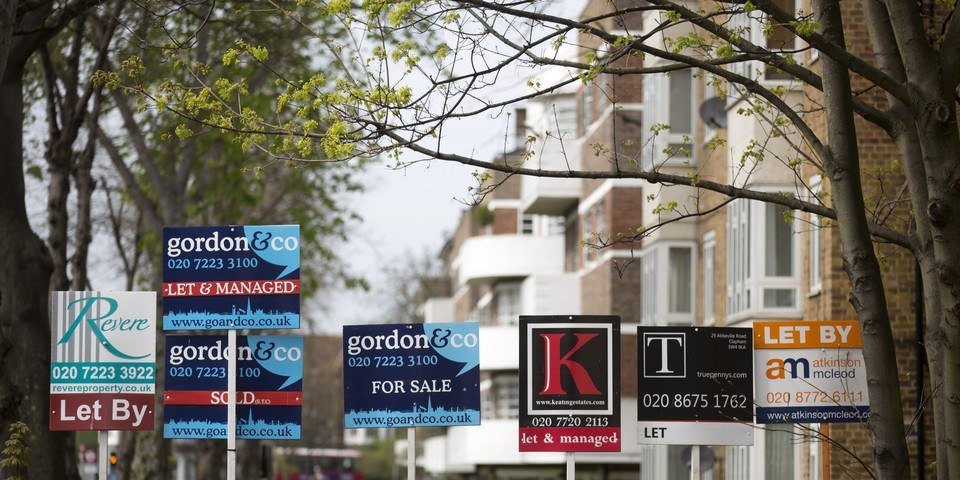The demand for rental property is still outpacing supply and rent growth is still rising – so the sector starts 2023 very much like it ended 2022, one property expert says.
Nicky Stevenson, the managing director of Fine & Country points out that the shortage of supply is what will underpin rent rises in 2023. She explains: “Annual rental price growth across England and Wales is currently 9% – apartment price growth is outpacing that of houses, at 11% versus 8.2% respectively. High levels of annual price growth in the prime markets of England and Wales are driven by activity in the capital.”
Threshold for a premium market rent in London
With the exception of the South East, at £3,792 the threshold for a premium market rent in London is more than double that of any other region.
Ms Stevenson says: “During 2022, 90% of all new rentals of £3,500 per month or more have been in the capital, of which 65% were apartments. Across the remainder of England and Wales, 94% of such rentals were houses.”
Busy with moderate rent price growth
Looking forward, Ms Stevenson says the rental market will remain busy with moderate rent price growth. She adds: “With higher mortgage costs set to impact profit margins, UK Finance predicts that £13 billion will be lent to buy-to-let landlords for new purchases over the course of 2023 and £30 billion to landlords looking to remortgage. Both are significantly lower than in 2021 and more in line with pre-pandemic levels.”
Changes to Capital Gains Tax
Ms Stevenson continued: “Taxation and legislative change is once again on the Government’s agenda, with changes to Capital Gains Tax to come into effect in April. The Renters’ Reform Bill is set to be introduced by the end of this Parliamentary session in May 2023, although it will take longer for the Bill to become law.”

More people than ever before are looking to rent a home
Propertymark has revealed its concerns and opportunities for landlords, buyers, tenants, sellers and investors in 2023., and its annual report highlights that more people than ever before are looking for a home in the private rented sector. There’s also a prediction of a return to a buyer’s market by the end of the year.
Strong demand from tenants looking to rent
Propertymark says a rising population and a lack of adequate housing construction have led to strong demand from tenants looking to rent in 2022. The report highlights that the number of prospective tenants registering with member branches set a new monthly record in September at 147 new prospective tenants per branch. Demand for rental property has grown by 57% since 2018, when Propertymark records began. At the same time, there was no growth in the size of the PRS to house these tenants.
No surprise that rents have risen
Propertymark says that with such a mismatch in demand and supply, it is no surprise that rents have risen in 2022. And this mismatch led to rent increases becoming the norm in many areas of the UK with most agents seeing rent rises in their areas. However, one big concern is the impact of upcoming legislation on landlords for 80% of agents. Agents also worry about diminishing yields (44%), and issues with damp, condensation and mould (35%).
Average number of viewings per property fell
In the sales market, the average number of viewings per property fell across the year from April to December by 71%. As one estate agent put it, ‘The cappuccino market days are over. We’re now in espresso times where only serious buyers are out looking for property’. This is because many buyers have decided upon a ‘wait and see’ approach to the current economic turmoil.
Member branches have seen a steady stream of new instructions on average over the year, with traditional dips in December (0% change year on year from 2021 to 2022). At the same time, the total number of properties for sale has steadily risen over the year.
Demand from home hunters looking to rent
Nathan Emerson, the CEO of Propertymark, said: “A rising population and a lack of adequate housing construction has led us to a peak of demand from home hunters looking to rent in 2022. “With such a mismatch in demand and supply, it is no surprise that rents have risen most keenly in 2022. The largest shift over 2022 for the sales market is in prices agreed compared to initial asking prices. Starting 2022 in a sellers’ market and ending the year back in the longer term normal of a buyers’ market. The seller’s market seen is unprecedented in our data which stretches back to 2013.”

High mortgage costs and deposits set to keep rental demand high
New data produced this morning by the Nationwide suggests prospective first time buyers are having a tough time – and many are likely to have to remain renting.
The lender says thebiggest change in terms of housing affordability for potential buyers over the past year has been the rise in the cost of servicing the typical mortgage as a result of interest rate rises.
The building society says this actually began in late 2021 with typical five-year fixed rates starting to rise, reflecting expectations that the Bank of England would have to hike rates significantly in the years ahead to help bring inflation back to its target two per cent.
Nationwide’s senior economist Andrew Harvey says: “Mortgage rates surged after the mini-Budget in late September [2022] reaching their highest levels since 2010, over four times higher than the lows prevailing in 2021. While wider financial market conditions had stabilised by the end of 2022, with market interest rates falling back towards the levels prevailing before the mini-Budget, mortgage rates are taking longer to normalise. The typical potential first time buyer – with an 80% loan-to-value mortgage – would now have to spend 39% of take-home (net) pay on mortgage servicing, which close to the levels seen in the run up to the 2008 financial crisis."
In addition, Harvey warns that raising a deposit is another major hurdle for prospective buyers. “In recent quarters, strong wage growth and a small fall in house prices has led to a modest fall in the house price to earnings ratio. But this has done little to improve the situation, as it follows several years when house price growth outpaced earnings by a wide margin. For example, between the start of the pandemic and the end of 2022, house prices increased by 19%, while incomes rose by a much more modest nine per cent. At the end of 2022, the UK first time buyer house price to earnings ratio stood at 5.6, the same level as at the end of 2021. This in turn means that a 20% deposit on a typical first time buyer home is now equivalent to 112% of the pre-tax income of a typical full-time employee, a similar level to a year ago, and only modestly below the all-time high of 117%t recorded earlier in 2022.”
Harvey suggests that there may be some scope for affordability to improve a little in the year ahead. Longer-term interest rates, which underpin mortgage pricing, have fallen back towards the levels prevailing before the mini-Budget, and he suggests that if this is complemented by personal income growth (currently running at about 7% in the private sector) the position would be less bleak. “Nevertheless, the overall affordability situation looks set to remain challenging in the near term. Saving for a deposit will still be a struggle for many. The cost of living is set to outpace earnings growth by a significant margin again this year, while labour market conditions are widely expected to weaken. Moreover, rents have also been rising at their strongest pace on record which will be a further drag for those currently renting who are looking to buy a home – especially since they also tend to spend a larger share of their income on housing costs than owners with a mortgage” concludes Harvey.
Rental supply shortage – stock drought set to continue
New rental stock accounts for just 16% according to fresh figures released about the lettings market.
Property company Ocasa has analysed the level of new rental stock reaching the market across Britain and where this level of new homes equates to the smallest proportion of total rental properties, areas by area.
In the last 14 days, just over 22,000 new rental properties have reached the market to boost rental property availability: however, this rental market stock boost accounts for just 16 per cent of the currently listed rental homes on the market.
On a regional level, the greatest scarcity of newly-listed rental properties is found in the West Midlands, where fresh rental stock accounts for just 11.7% of total available rental properties. In both the East Midlands and Wales, newly listed rental stock accounts for just 12%of all homes available to rent.
The percentage of new rental listings entering the market also sits below the national average in Yorkshire & Humber (13%), the North East (14%, North West (14%), and South East (15%).
When analysing the data at major city level, it’s Leeds where tenants are facing the smallest proportion of rental stock at just six per cent. In Birmingham, new rental stock currently accounts for just 8% of total properties available, climbing to 9% in Nottingham, Liverpool, Newcastle and Sheffield.
Ocasa marketing director Jack Godby states: “We are entering what could be a very difficult year for tenants. Not only do they face the tough task of accumulating a sizable deposit in order to secure a rental property, but the rising cost of living is putting a further squeeze on their finances on a long term basis. That is, of course, if they can find a property in the first place, with competition already extremely high across many areas of the market. Unfortunately, the government’s best efforts to improve tenant welfare simply haven’t helped as the focus has very much been centred on the financial returns available to landlords, not the tenants themselves.So it’s hardly surprising that more and more landlords are choosing to exit the sector, with the level of new rental properties entering the market simply not sufficient enough to meet current demand. This reduction in stock will only hurt tenants further as a supply demand imbalance causes rental prices to continue to climb ever higher.”

